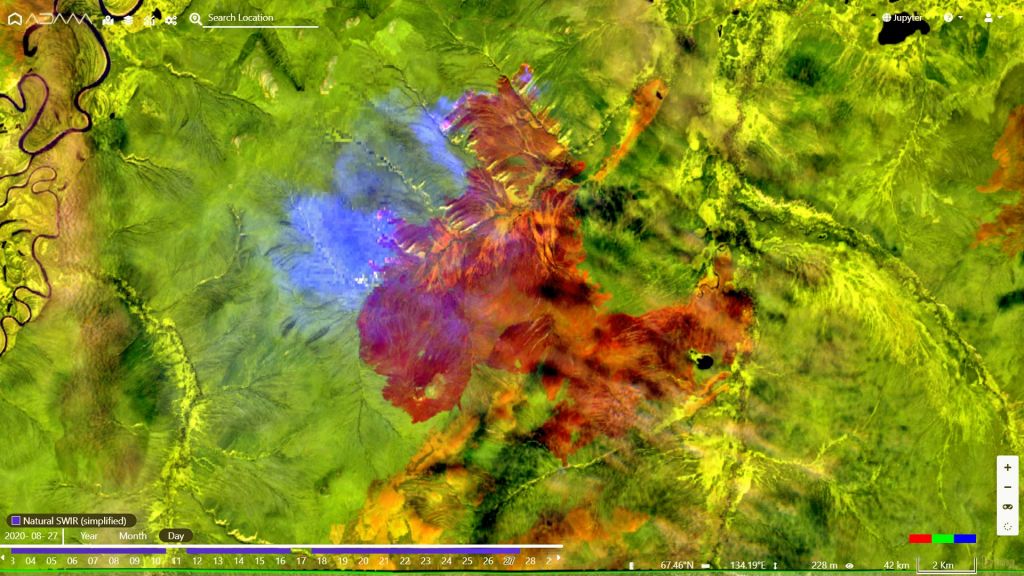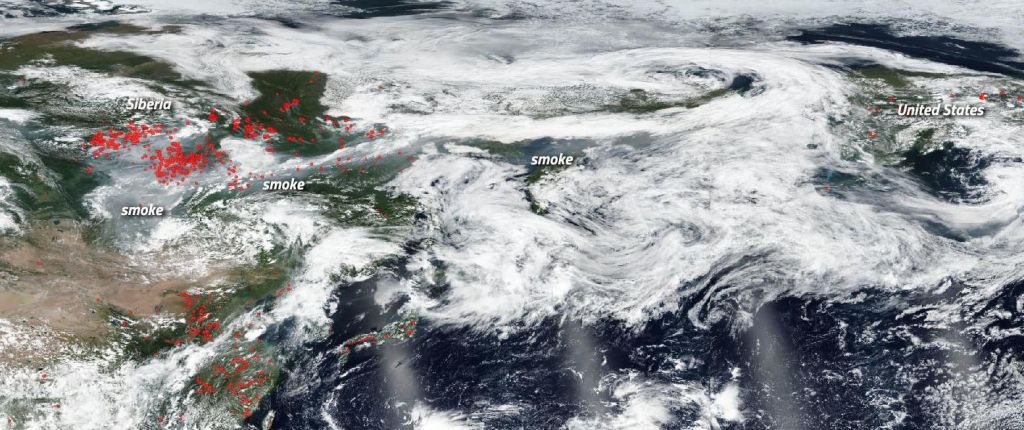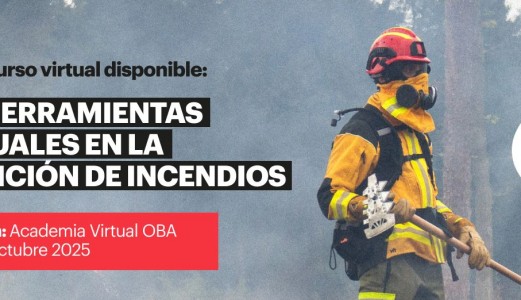2019 never started a fire campaign, because 2018’s never ended. In January, California coexisted with the aftermath of the deadliest fire in history ever recorded, leaving 48 dead and hundreds missing.
In the northern hemisphere the fires began in spring. China burned recording serious incidents, including the death of 30 people, 27 of whom were firefighters who were trapped when a change of wind direction fanned the flames that burned the forest environment of the Sichuan Province.
In May unusually gusty winds caused rapid growth of fires in Canada forcing authorities to evacuate 10,000 people. Days later, a NASA satellite captured the image of a river of smoke running eastward across Alberta, Sakatchewan and Manitoba. The intense burning fed the pyro cumulus clouds (clouds of fire produced by intense air heating with columns generating surface suction winds) that threw smoke into the atmosphere and allowed high-level rapid winds to transport it long distances. The remains of the mega fires of North America reached the Iberian Peninsula.

During the months of June and July unprecedented fires hit Siberia and the northern European regions with fires that swept really vast areas due to continuity and availability of fuel. This type of fire, rare in the Arctic circle, had a higher incidence due to the arid conditions of the terrain after a dry season.

The same month of July, Germany faced a fire that affected 6 square km of forest and forced to evacuate several towns in the North-east of the country. Although the affectations were minor and the intensity of the fires does not allow their classification as extreme events, these were a great challenge for the federated state of Mecklenburg-Antepomerania, which had never recorded a similar episode. The authorities had to make an unprecedented investment in extinguishing equipment due to lack of foresight.
Extreme episodes of dry and reheated winds in southern advections (confluence of local winds with an anticyclone that dragged warm air from the Sahara) hit the western part of Europe. Thus, we saw great convective phenomena in Portugal, Spain, the Canary Islands and France. All of them with great capacities to penetrate the atmosphere and generate pyro cumulus.
In August, the Amazon burned from end to end; Brazil, Uruguay, Paraguay. One of the fires in Bolivia called attention by satellite: there was a jump in behaviour and speed which repeated up to five times in a row. In the Dry Forest there were such quantities of available fuel that, exposed to an atmosphere with great latent energy, generated the ideal conditions for the daily formation of pyro cumulus to evolve onto pyro cumulonimbus, popularly known as a fire storm. Large convective clouds take advantage from the air instability of convective phenomena to transfer fire energy at high rates and subsequently collapse and relapse triggering violent winds.
The dimensions, races, progressions of fires in Bolivia were classified as extreme events. In the last 20 years we have seen this phenomenon twice in South America: once in Chile and once in Argentina which were monitored for further study and learning. Fires of such magnitude make extinction works impossible, allowing management only on key days of opportunity and confinement of fronts, forcing the necessary international cooperation through analytical contributions.
In the midst of global turmoil over fires in Amazon, a satellite image of NASA revealed that there were more fires in Central Africa than Brazil. In Angola and the South of the Democratic Republic of Congo alone, there were more than 10,000 active fires, compared to 2,127 in the South American country.
The rainy season in Bolivia occurred at the beginning of the fire campaign in Indonesia, which put Asian firefighting crews to the edge. This time facing convective phenomena in the most arid regions of the country. Thousands of acres were burned. Although fires are common in Indonesia, especially at the end of the dry season (from April to October), there was a much more intense activity than the average due to the aridisation of regions such as Sumatra and Kalimantan.
When the Northern hemisphere began to calm down and the models marked the first Autumn rains, the fires of Chile, Argentina and South America woke up showing very early intense behaviors. After a cold and dry season the prediction for this region is instability and large fires.
In October, wild-land fires had razed more than half a million acres in Australia. The common intense combustions of the area were exacerbated by high temperatures which triggered extreme phenomena compromising the quality of the air, polluting the waters and destroying the flora and fauna. In November a wave of strong winds caused the simultaneity of ignitions, which further increased their intensity, hard testing the emergency teams and the population. Fortunately, the national system has technological means to predict extreme events (the transition from PyroCu to PyroCb), achieving greater speed in evacuations of inhabited areas.
Some locations in New South Wales have lost up to 80% of their homes and businesses. There have been confinements in the coastal area of the State of Victoria, numerous accidents due to trapping situations and alarming pollution rates have been reached. 28 mortal victims and 5 million acres are the balance left by this wave of fires that Australia has been suffering since September, according to official data.
Experts point out that the fire seasons in the oceanic country will be increasingly long and severe due to climate change. The East coast is experiencing one of the worst droughts in history, which means that the surface of the country that is currently on fire is extremely dry, and burns very easily. Unpredictable fires that have worsened by record breaking heatwaves and winds, increasing their intensity, speed, endurance and prolongation over time.
This paradigm shift poses a new challenge: ground crews, which fight fires directly for weeks, even months, without a rest, facing one heat wave after another, do they wear the appropriate costumes? Do they have air equipment for trapping situations? Does society have sufficient prevention systems to protect the civilian population when fires break into the cities?
Fires gain unusual relevance when they affect large population centers. In Siberia, the authorities mobilized when the smoke from the fires crossed borders affecting the air quality of the Mongol capital Ulán Bator. According to NASA data, in late July the polluting particles reached the West coast of Canada. In California, public opinion played a fundamental role when the flames burned the homes of many celebrities, such as Kurt Rusell's. In Australia, alarms were set when the fires surrounded Sydney, one of the main cities in the country and home for five million people.
What consequences have these fires had on society? Only in Spain they have razed 50,000 acres (three times more area than in 2018), over 15 million acres worldwide. More than a hundred people died caught in the fire. Thousands have been displaced or confined. There have been serious health effects: the OEH of New South Wales has decreed that the air quality in Sydney is dangerous; 11 times higher than the limit of unhealthiness in some neighborhood, where staying all day outside equals smoking 34 cigarettes. The 2019 scenario has been terrifying. Are we ready for 2020?
We face conditions that favor the appearance of fires throughout the year with the consequent increase in risky days. Our highly loaded landscapes are a serious problem but the trigger is the climate crisis. We have hotter atmospheres, with more latent energy and more probability of developing pyro phenomena. To the timelessness and magnitude of the new fires is the appearance of ignitions in areas where historically no incidents had been recorded.
Satellite and weather modeling technologies play a key role when such episodes occur. The future of the extinction of forest fires must move towards the improvement of the monitoring systems (to be able to control phenomena of small magnitude with scalability) and the endowment of knowledge of the operational controls, not forgetting the importance of having effective machinery and safe protective equipment for direct fire fighting on the ground (clearance or auction in hard campaigns are essential to avoid constant revivals). Furthermore, our forest landscapes must be correctly maintained to prevent the spread of fire by access of fuel in the event of fire.
Climate change is here to stay. Politicians, farmers, environmental managers, emergency crews and citizens must work together to address this threat. Nature works as an integrated system. Society should take an example and work on a common map of actions.






